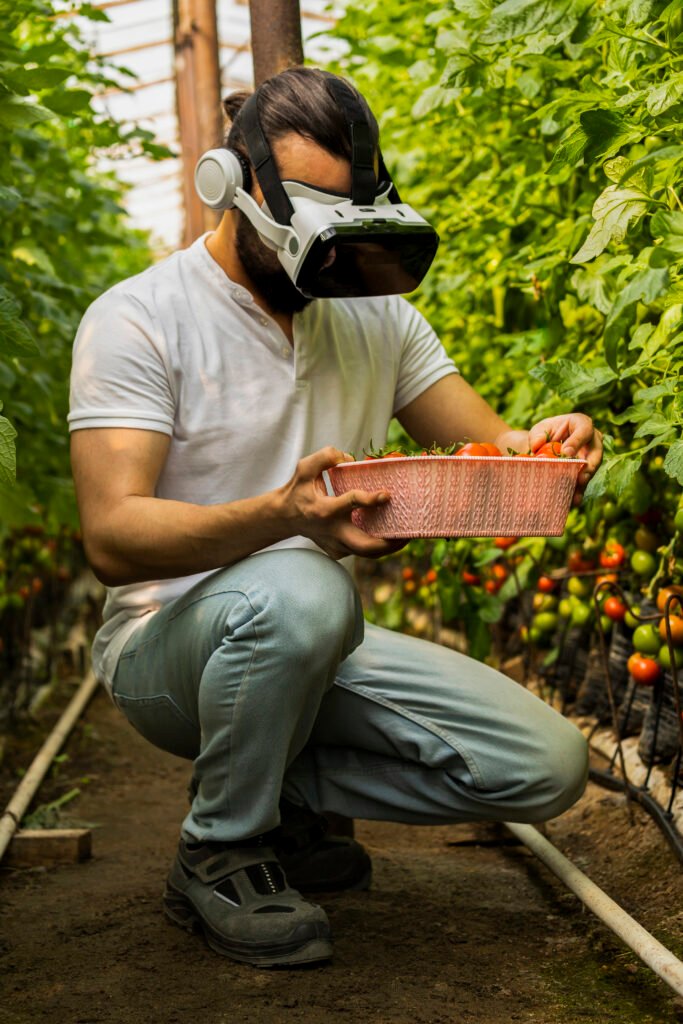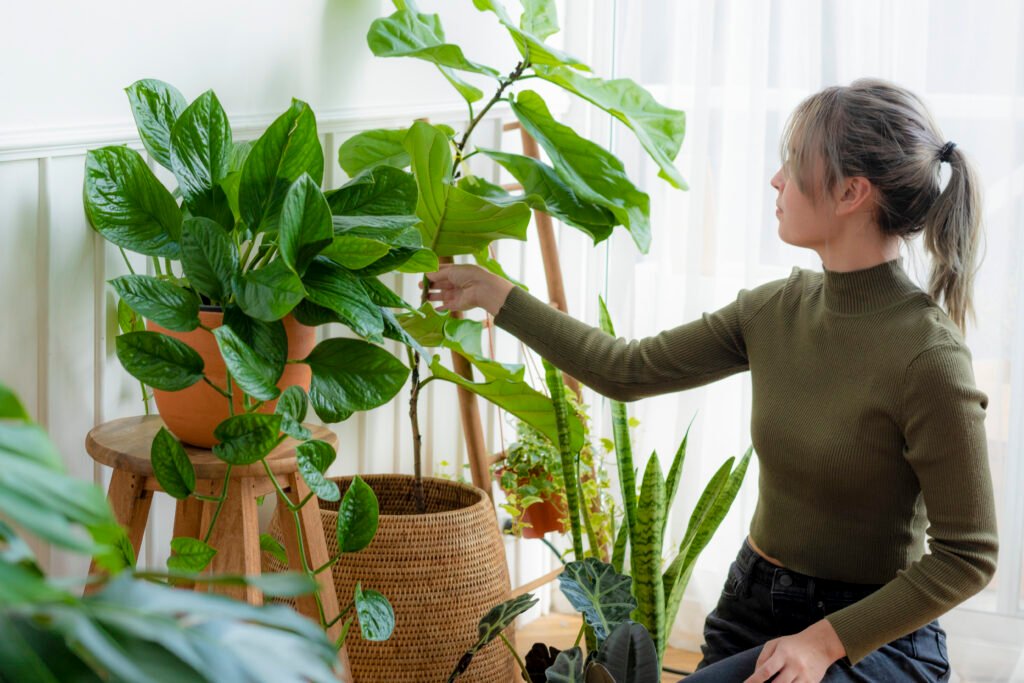
Plant augmented reality (Plant AR) is currently causing quite a stir in the botanical sphere, revolutionizing the classic notion of ‘stop and smell the roses’ by incorporating advanced technology. This innovative fusion of plant expertise and state-of-the-art AR technology presents an engaging avenue for plant enthusiasts and tech-savvy gardeners to interact with their beloved botanical wonders. Delving deeper into Plant AR, we unravel its numerous advantages, potential challenges, and provide a glimpse into the exciting future prospects within this vibrant digital landscape.
With AR garden applications, individuals can design and simulate gardens in their actual living spaces before any physical work begins. Additionally, AR plant selectors can help users understand the growth and care requirements of various plants in real-time, enhancing the gardening experience. Augmented Reality flowers bring an extra layer of beauty and information, allowing users to identify species and learn about their care through immersive, interactive experiences.
Explore the fascinating world where nature meets cutting-edge technology with Plant AR!
Plant AR – A Blend of Nature and Technology
Plant AR is fundamentally rooted in the premise of merging nature with technology. It involves using computer-generated sensory inputs such as sound, video, graphics or GPS data to overlay virtual information onto a plant’s physical environment. This augmented reality experience can be accessed through various mediums, including smartphones, tablets, and specialized headsets.
What is Plant Augmented Reality?
Imagine strolling through a garden center, peering through your smartphone to see how that exotic plant from the Amazon would look alongside your petunias. This isn’t science fiction; it’s Plant Augmented Reality. Essentially, Plant AR incorporates computer-generated imagery to enhance the perception of the real world, providing an interactive experience that overlays virtual data onto the user’s physical environment.
The appeal of AR lies in its ability to bridge the gap between the digital and physical realms, allowing users to engage with plants without the constraints of space, climate, or soil. Combining AR with plants opens doors to a myriad of possibilities, from virtual landscaping to on-the-spot learning experiences.
Plant Augmented Reality (Plant AR) combines advanced technologies like augmented reality and machine learning with the botanical world. This unique blend allows users to interact with virtual representations of real plants in a digital setting, essentially bringing plants to life through your smartphone or tablet screen!
How Plant AR Works
Plant AR applications are powered by complex algorithms and sensors within smartphones and tablets. They use these tools to recognize the physical characteristics of plants, such as their shape, color, and texture. By matching these traits to a database, the app can superimpose digital information onto the real plant through the device’s display.
A user might point their phone at a flower in a garden, and the AR app could display a wealth of information – species, blooming season, and care instructions. High-tech versions might even project an image of how the flower will look in different colors or in various growth stages.
Benefits of Plant AR
Accessibility to Information
Conventionally, obtaining detailed plant information often involved referencing books or conducting online searches. This process could be time-consuming and cumbersome. However, with the innovative technology of Plant AR, users can now effortlessly access encyclopedic knowledge about plants with just a few taps on their device. This revolutionary tool not only streamlines the information retrieval process but also enhances the overall experience of exploring and learning about plants.
Educational Tools
For educational institutions and learners, Plant AR offers an innovative approach to bringing textbooks to life. By utilizing augmented reality (AR) technology, educational modules can vividly showcase intricate plant life cycles, detailed anatomy, and intricate ecological interactions. This immersive experience provides a tangible and engaging way for students to deepen their understanding of botanical concepts.
Planning and Design
Landscape architects and garden designers can leverage Plant AR, an innovative tool that harnesses augmented reality technology. This cutting-edge solution allows professionals to visualize various plant species and design elements within a real-world environment. By providing a realistic preview, Plant AR facilitates meticulous planning of gardens and green spaces, enabling precise and visionary landscaping projects.
Interactive Experience
The playful and interactive nature of Augmented Reality (AR) technology engages users of all ages and various levels of horticultural expertise, transforming the process of learning about and nurturing plants into a truly immersive and dynamic experience. By seamlessly blending the virtual world with the real, AR creates an educational environment that encourages exploration and deepens understanding, making plant care more enjoyable and educational for everyone involved.

Challenges in Plant AR Adoption
Technology Hurdles
The success of Plant AR is heavily dependent on the sophistication of the technology. It needs robust recognition algorithms and capable devices, which may limit its accessibility to those with the latest gadgets.
Data Accuracy
The reliability of the plant information displayed is crucial. Inaccurate data could lead to misguided care or the selection of unsuitable plants for a location, resulting in disappointment and potential waste of resources.
Conservation and Ethical Considerations
There is a concern that the fascination with virtual plants might lead to a devaluation of real-world conservation efforts. Additionally, ethical questions arise regarding the sourcing of virtual plant images and intellectual property rights.
You may alos like Augmented Reality Homes
Future of Plant AR
The potential growth of Plant AR is extensive. With advancements in image recognition, the technology will become more precise, making it possible to identify plants at the species level with high accuracy.
We can also foresee the integration of AR with other horticultural technologies such as Internet of Things (IoT) devices, creating smart gardens that respond to data displayed through AR interfaces.
In the not-so-distant future, AR could be a standard feature in garden centers, allowing shoppers to do a ‘test-run’ of their landscaping plans before planting a single seed.
Conclusion
Plant Augmented Reality serves as a reminder that technology can deepen our connection with the natural world. While it’s not without its challenges, the benefits of AR in the botanical realm are as vibrant as the flowers it can help us appreciate. As developers, conservationists, and plant lovers collaborate, we can look forward to a greener, more interactive future, rooted in the soil but flourishing in the digital universe. This visionary mix of botanical expertise and AR is revolutionizing how we connect with plants, offering a captivating journey. Designed for plant lovers and tech enthusiasts, Plant Augmented Reality unveils an interactive platform for an immersive exploration of the plant kingdom in a dynamic digital setting. Step into a virtual garden, interact with lifelike plant models, and uncover the intricate beauty of plants like never before.
So next time you’re out in nature or browsing through a garden center, remember that with a few taps on your smartphone, you can unlock a world of information and experience plants like never before.
Share to
Frequently Asked Questions (FAQ)
Plant Augmented Reality (Plant AR) refers to the use of AR technology to overlay digital information onto the physical environment, specifically focusing on plants. This can include projecting growth simulations onto actual plants, identifying species through image recognition, or even placing virtual plants into real-world garden layouts.
Yes, there are various apps that utilize Plant AR technology. Some apps allow users to point their smartphone cameras at plants to learn more about them, while others help gardeners visualize what new plants will look like in their gardens before planting. Popular examples include apps such as [Insert names of popular Plant AR apps], which are available on multiple platforms.
Yes, there are various apps that utilize Plant AR technology. Some apps allow users to point their smartphone cameras at plants to learn more about them, while others help gardeners visualize what new plants will look like in their gardens before planting. Popular examples include apps such as [Insert names of popular Plant AR apps], which are available on multiple platforms.
Related Posts

Artificial Intelligence Algorithms
Artificial Intelligence algorithms are the backbone of modern intelligent systems, enabling machines to perform tasks that typically require human intelligence.

Innovations in AI for Education
Discover how Innovations in AI (Artificial Intelligence) is transforming education with personalized learning paths, intelligent tutoring systems, and predictive analytics for enhanced learning experiences.

Best AI Virtural Camera Software
Discover the best AI virtual camera software enhancing remote work with features like background replacement, real-time effects, and advanced facial tracking. Explore their benefits and unique selling points in our latest blog.
